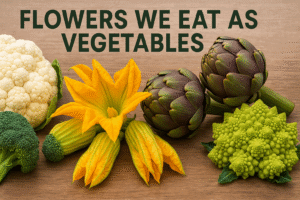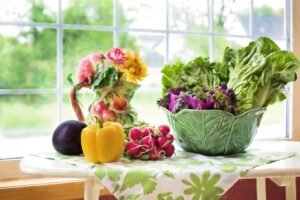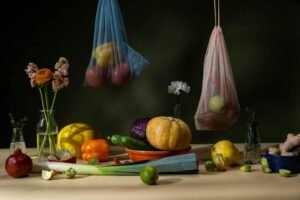Flowers We Eat as Vegetables:
When we think of vegetables, we often picture leafy greens, roots, or fruits, but flowers. Flowers we eat as vegetables. Yes, many edible flowers are consumed daily worldwide, often disguised as common vegetables. From broccoli to zucchini blossoms, these floral delights are packed with nutrients and offer unique flavors to your meals. In this article, we will explore flowers that are eaten as vegetables, their health benefits, popular varieties, and how to use them in cooking.
What Are Edible Flowers?
Edible flowers are blossoms that are safe for human consumption. Some flowers are eaten raw, while others are cooked and used as vegetables. Many of these flowers come from plants we already recognize as part of our diet. They not only add color and visual appeal to dishes but also bring nutritional value.
Some flowers we eat as vegetables include cauliflower, broccoli, zucchini flowers, and artichokes. These have been part of culinary traditions for centuries.
The Science Behind Eating Flowers
Botanically, many vegetables we consume are actually flower parts. In plants like broccoli or cauliflower, the part we eat is the immature flower head. These edible flowers contain vitamins, fiber, and antioxidants.
Eating flowers as vegetables is not only about aesthetics. Science shows these parts of plants can be rich in phytonutrients, beneficial plant compounds that support overall health.

Popular Flowers We Eat as Vegetables
Many flowers double as vegetables on our plates. Below are some of the most common:
1. Broccoli
Broccoli is an immature flower head of the Brassica oleracea plant. It’s rich in fiber, vitamins C and K, and antioxidants.
2. Cauliflower
Like broccoli, cauliflower is also the undeveloped flower of the same plant species. It’s versatile, low in calories, and packed with vitamins and minerals.
3. Artichokes
Artichokes are actually flower buds harvested before they bloom. Known for their tender heart and meaty leaves, artichokes are high in fiber and antioxidants.
4. Zucchini Flowers (Courgette Blossoms)
Zucchini flowers are bright yellow-orange blooms that are edible and often stuffed or fried. They have a delicate flavor and are popular in Mediterranean cuisine.
5. Squash Blossoms
Other squash varieties, including pumpkin and pattypan, produce edible blossoms similar to zucchini flowers. They are used in soups, salads, or fried preparations.

Health Benefits of Eating Edible Flowers as Vegetables
Incorporating flowers into your vegetable intake offers numerous health benefits:
- Rich in Antioxidants: Many edible flowers contain compounds that fight oxidative stress.
- High in Fiber: Flowers like artichokes promote digestive health.
- Vitamin Boost: They provide essential vitamins like C, K, and folate.
- Low in Calories: Most edible flowers are low in calories, ideal for weight-conscious diets.
Besides nutrition, they can reduce inflammation and support heart health.
Lesser-Known Edible Flowers Used as Vegetables
Beyond the popular varieties, several lesser-known flowers serve as vegetables:
1. Banana Blossoms
Banana flowers, especially popular in Southeast Asian cuisine, are edible and often used in salads or curries.
2. Agati Flowers (Sesbania)
These flowers are common in Indian and Thai cooking, known for their medicinal properties.
3. Chive Blossoms
The purple blooms of chives have a mild onion flavor and can be added to salads or used as garnishes.
How to Cook Flowers as Vegetables
Cooking edible flowers requires some care to preserve their delicate texture and nutrients.
- Steaming or Blanching: Ideal for broccoli and cauliflower.
- Stuffing and Frying: Popular with zucchini and squash blossoms.
- Raw in Salads: Chive blossoms and banana flowers add color and flavor.
Always clean flowers thoroughly and ensure they are free of pesticides before cooking.
Precautions When Eating Edible Flowers
While many flowers are safe, not all are edible. Some flowers can be toxic if consumed.
- Correct Identification: Only eat flowers known to be safe.
- Avoid Florist Flowers: These may be treated with chemicals.
- Moderation: Some edible flowers can cause digestive issues if overeaten.
When in doubt, consult reliable sources or experts before trying new edible flowers.
Culinary Cultures That Eat Flowers as Vegetables
Across the globe, cultures have embraced flowers as vegetables:
- Italy: Fritters and stuffed zucchini flowers.
- China: Stir-fried squash blossoms.
- India: Banana flower curries and Agati flower soups.
- France: Artichokes as gourmet delicacies.
These traditions reflect the global appreciation for floral vegetables.

Growing Edible Flowers at Home
Many edible flowers are easy to grow at home, adding beauty and food value to your garden.
- Zucchini and Squash: Require space but yield plenty of blossoms.
- Chives and Herbs: Compact and suitable for small spaces.
- Artichokes: Ideal for warm climates with patience for growth.
Homegrown edible flowers ensure freshness and safety for consumption.
Conclusion: Flowers Are More Than Just Pretty
Flowers we eat as vegetables blend beauty, nutrition, and flavor into our diets. From well-known broccoli to delicate squash blossoms, these edible blooms offer health benefits and culinary versatility.
Exploring edible flowers can transform your meals and garden, enriching your lifestyle with nature’s colorful bounty.
Frequently Asked Questions (FAQs)
Q: Are all vegetable flowers edible?
A: No, only specific flowers are safe for consumption. Proper identification is essential.
Q: Do edible flowers lose nutrients when cooked?
A: Some nutrients may reduce with heat, but gentle cooking preserves most benefits.
Q: Can I grow edible flowers in containers?
A: Yes, many edible flowers like chives and zucchini can thrive in pots with proper care.
Q: Are edible flowers good for weight loss?
A: Yes, most are low in calories and can complement a balanced, weight-conscious diet.
Q: How do I store edible flowers?
A: Keep them refrigerated and use them within a few days for maximum freshness.
By incorporating edible flowers as vegetables, you can enjoy a nutritious, visually appealing, and flavorful dining experience every day.
Tags: Edible Flowers, Flowers We Eat, Vegetable Flowers, Nutrition, Cooking Tips, Garden-to-Table
1 thought on “Flowers We Eat as Vegetables”